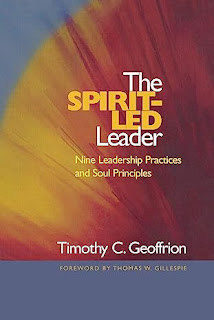Leaders on Leadership by George BARNA
Wisdom, advice and encouragement on the Art of Leading God’s people. Fifteen distinguished leaders have contributed chapters to this book, with each giving an angle of looking at leadership and the art of leading people. The authors show that leadership is an art, not a science.
George Barna begins by showing that nothing is more important than leadership – while there is no universally accepted definition of leadership, Barna adopts the definition by Garry Mills: Leadership is mobilizing others toward a goal shared by the leader and followers.
There are eight traits that leaders who have been called possess, among which an undeniable inclination: True leaders are naturally inclined to lead. They sometimes assume a position of leadership reluctantly or they are eager to lead because simply they cannot help it. A leader perceives and thinks differently from others. They are mostly dissatisfied with the status quo and have a burning desire to lead people to a better future. They are mindful of the big picture, and are not satisfied with focusing only on the micro-level events of the day.
The current crisis that the world is experiencing today is in reality a leadership crisis. And lack of leaders with compelling visions. What is a vision? It is a clear mental portrait of a preferable future, communicated by God to his chosen servant-leaders, based upon an accurate understanding of God, self and circumstances. Real leaders do more than simply point out problems; they articulate and involve people in real solutions based on a true and holistic vision, with transforming action.
Four primary factors are involved in discerning God’s vision for your life. (1) Know yourself – great leaders know intimately who they are. (2) Knowing God – His purposes, His manner, His timing and His glory. (3) Knowing your context – If you are to be used to shape the future, you must understand the past and the present. (4) Knowing good advice – One to the benefits of working with others is that they may see things we cannot see because we are too close to the situation.
Kenneth O. Gangel believes that the tasks leaders fulfill come in six primary areas: relating, organizing, achieving, thinking, envisioning and enduring. Leaders cannot escape visibility. They stand up from at meetings by in the trenches, in the day-to-day functioning of an organization; a leader achieves goals and accomplishes tasks through relationships.
Jack W. Hayford discusses the character of a leader. All true leaders know that the real “stuff” of a leader goes deeper than they gifts. Substance before style; what you are is more important than what you do. A leader of character recognizes that fruitful leadership is defined not by the ability to produce results, but as the capacity to bring those I lead to their deepest enrichment and highest fulfillment.
The leader should pay close attention to these arenas of vulnerability: 1. Matters of Accuracy – absolute honesty in all communication with those you lead. 2. Matters of Privilege – being accountable with privileges related to leadership. 3. Matters of Power – never exercise the full extent of the power inherent in your position. 4. Matters of Perceived prestige – Fame and recognition render a leader vulnerable to inappropriate vanity, especially when comparisons are made. 5. Matters of Moral purity – The Bible gives moral purity in sexual, financial, and relational matters a special mandate. A leader who wants to cultivate a heart of integrity must commit to this high moral standard.
A leader should be unselfish and generous, willing to open his home for ministry and to share his earthly blessings with both Christians and non-Christians.
On being a tough and tender leader, H. B. London Jr.: We must either get tough or we will be destroyed. We must develop a mind-set, a self-image and a skin that is not easily torn. As we help leaders develop, it is not enough to have people who know how to do things right but to develop leaders who articulate and envision the right things to do. Teaching them to observe, reflect and act.
The difference between leaders and followers is perspective. The difference between leaders and effective leaders is better perspective. Effective leaders have better perspective.
The Leaders’ giftedness refers to three things: natural abilities, acquired skills and spiritual gifts. And as we develop as leaders, we tend to follow a destiny pattern: Destiny preparation activities, destiny revelation activities and destiny fulfillment activities.
When introducing innovation, as a leader, separate your reaction to ideas from your reaction to the people expressing ideas. Don’t let a valuable innovation be emotionally decimated by a negative reaction to the individual.
When building a team, find ways to reach down and touch everyone in the team. Make individuals feel important and part of something larger than themselves.
The role of leadership is to see, and to keep in view, the big picture. In conflict, this means seeing the battle from God’s perspective. That is looking beyond what is immediately seen, to understand what comes before and after. Leaders focus on patterns, not events. It also helps in conflicts to assume that you are part of the problem as it eliminates blaming.
Leaders are the prime creator, keepers and cultivators of corporate culture. The founders and leaders of an organization create the cultural values that are the trademarks of the group. Their primary role is to understand the organizational values and climate. Just as attitudes shape performance, so the environment a leader creates shapes the effectiveness of the followers.
The ultimate goal of a leader should be to finish well and lead a legacy.





Comments
Post a Comment